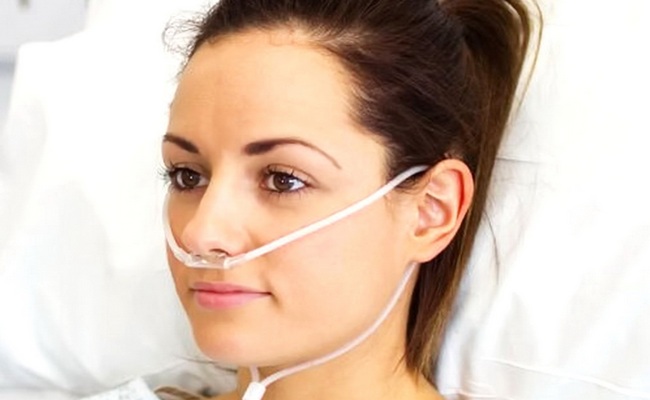Definition of Oxygen Therapy:
Oxygen therapy is a method by which oxygen is administered in low concentration through a cannula which is disposable plastic device with two protruding prongs for insertion into the nostrils or administering oxygen to the patient by means of a mask according to requirement of patient. In this article I have discussed mainly nasal cannula oxygen therapy administration guidelines for nurses.

Indications of Oxygenation or Oxygen Therapy:
1. Any individual with one or more of the following:
- Peri and post cardiac or respiratory arrest.
- Hypoxia diminished blood oxygen levels (oxygen saturation levels of <92%).
- Acute and chronic hypoxemia.
- Signs and symptoms of shock.
- Low cardiac output and metabolic acidosis (HCO3 18mmol/l).
- Chronic type two respiratory failure (hypoxia and hypercapnia.
2. Despite a lack of supportive data, Oxygen is also administered in the following conditions:
- Dyspnoea without hypoxemia,
- Post-operatively, dependent on instruction from surgical team,
- Treatment of pneumothorax,
- Anaemia,
- Asphyxia,
- Poisoning,
- Drowning,
- During severe case of injury,
- Bronchial asthma,
- Cardiac asthma,
- Chest trauma,
- After severe haemorrhage.
Methods of Oxygen Therapy Administration by Nasal Cannula in Nursing:
1. Equipment:
- Articles needs for oxygen therapy,
- Oxygen source,
- Nasal cannula with connecting tubes,
- Humidifier with distilled water,
- Flow meter,
- Gauze pads,
- “No smoking” signs.
2. Procedure:
- Review chart for physician’s order for oxygen to ensure that it includes method o delivery, flow rate, titration orders; identify client.
- Wash your hands.
- Identify client and proceed with 5 rights of medication administration. Explain procedure to client. Explain that oxygen will ease dyspnea or discomfort, and inform client concerning safety precautions associated with oxygen use. Encourage him or her to breathe through the nose.
- Assist client to semi- or high Fowler’s position, if tolerated.
- Insert flow meter into wall outlet. Attach oxygen tubing to nozzle on flow meter. If using a high O2 flow, attach humidifier. Attach oxygen tubing to humidifier.
- Turn on the oxygen at the prescribed rate (Fig. 5). Check that oxygen is flowing through tubing.
- Hold nasal cannula in proper position with prongs curving downward.
- Place cannula prongs into nares.
- Wrap tubing over and behind ears.
- Adjust plastic slide under chin until cannula fits snugly.
- Place gauze at ear beneath tubing as necessary.
- If prongs dislodge from nares, replace promptly.
- Assess for proper functioning of equipment and observe client’s initial response to therapy.
- Ensure that safety precautions are followed.
- Wash hands.
- Document time, flow rate and observations made on patient.
- Encourage patient to breathe through his/her nose with mouth closed.
- Remove and clean the cannula with soap and water, dry and replace every 8 hours. Assess nares at least every 8 hours.

Maria Khatun Mona is a Founder and Editor of Nursing Exercise Blog. She is a Nursing and Midwifery Expert. Currently she is working as a Registered Nurse at Evercare Hospital, Dhaka, Bangladesh. She has great passion in writing different articles on Nursing and Midwifery. Mail her at “maria.mona023@gmail.com”
